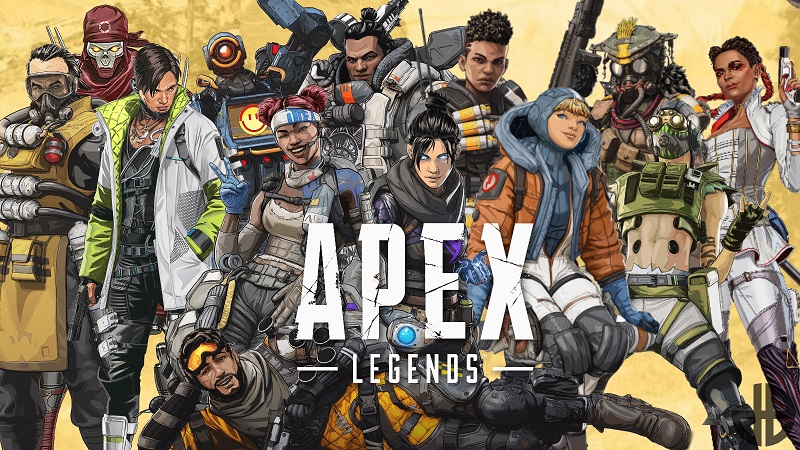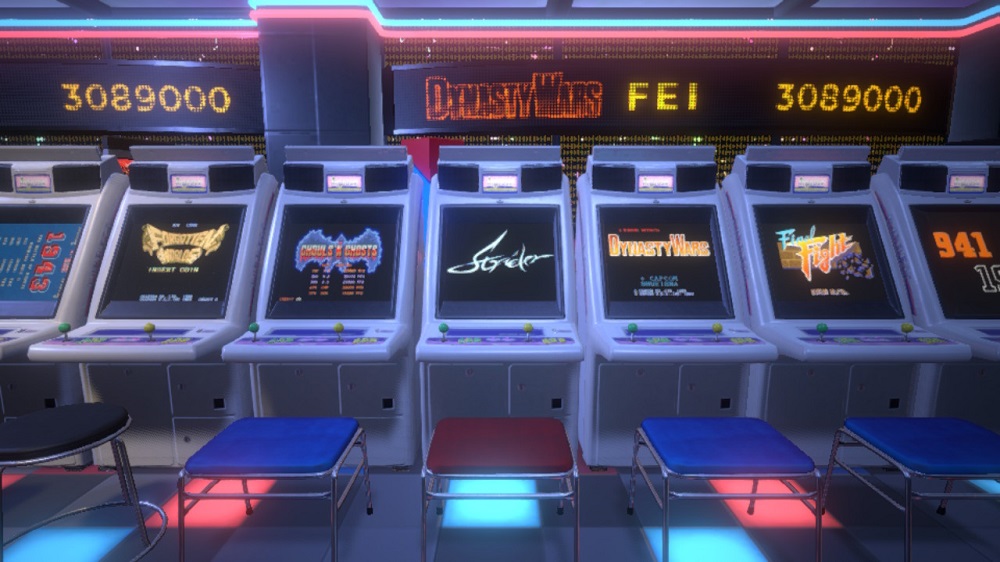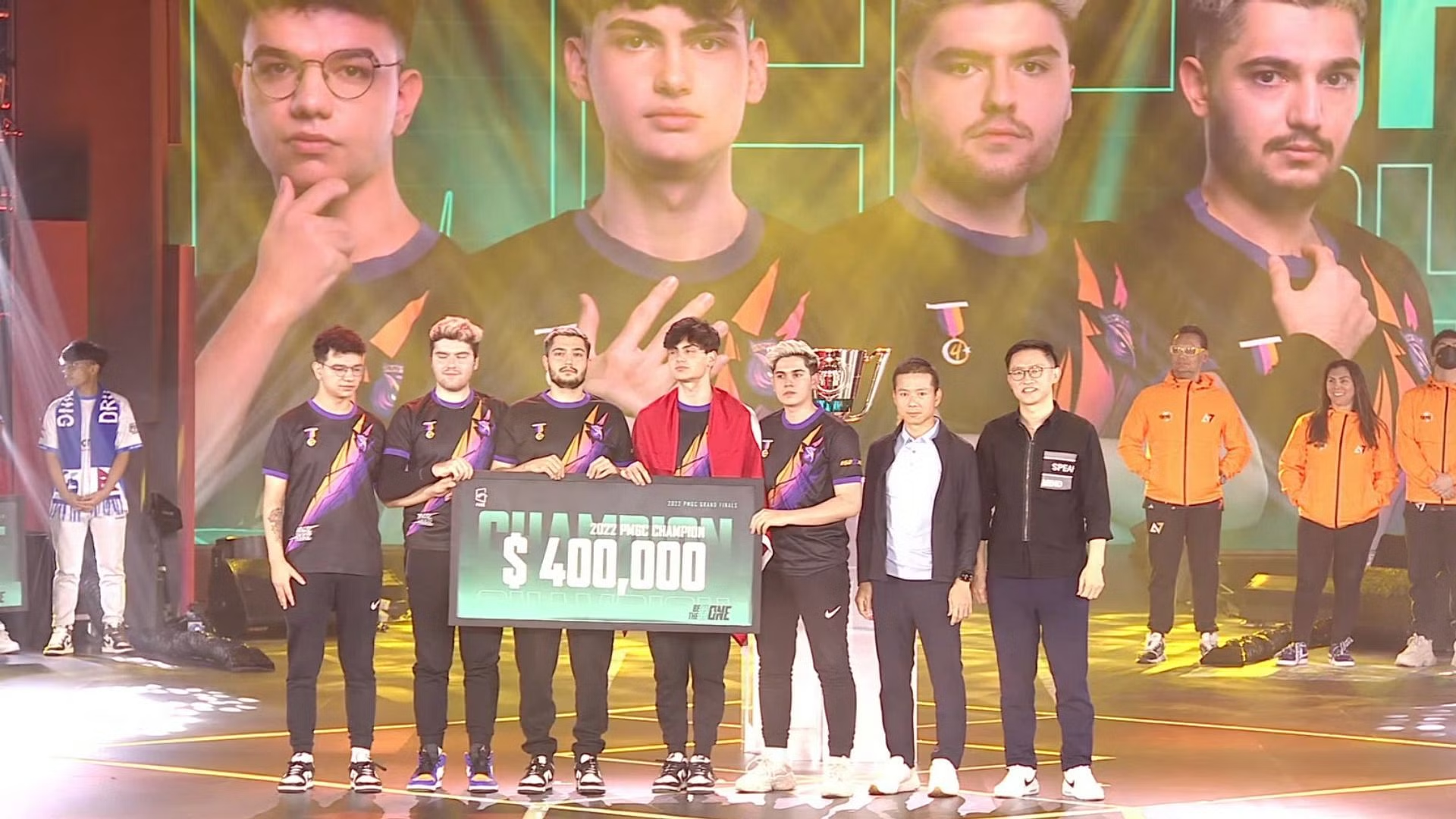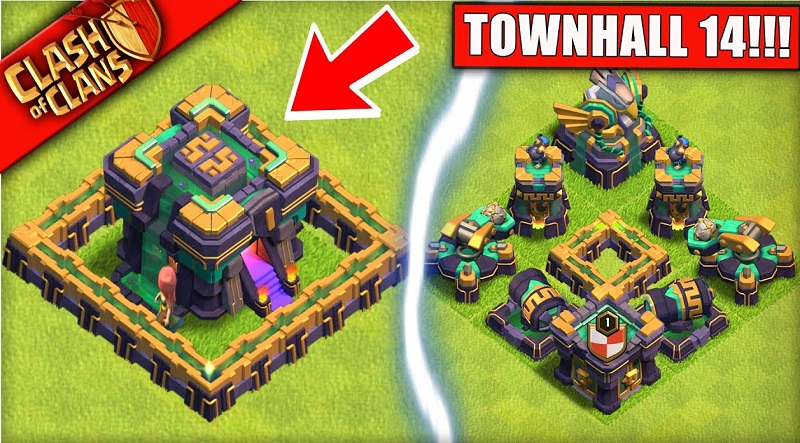
Game Review : Apex Legends 2021
Apex Legends Review - 2021
[Editor's Note: With Apex Legends' recent release on Switch, we’ve taken a fresh look at the whole game in 2021. This review replaces our original from 2019, and you can find our new Switch-specific impressions below. Read more on IGN's re-review policy.]
Apex Legends is the only battle royale where I can launch myself up into the sky and dodge bullets in the air while throwing a mini black hole at an enemy squad as my teammate simultaneously rains a hellfire of mortars down upon them. Since its release in 2019, Apex has continued to grow and evolve in exciting ways, adding both more content and fresh new ideas to a genre that too frequently feels derivative. The fast-paced matches never fail to get my heart racing as I jump, slide, and dodge bullets while hip-firing a sniper rifle to win a 1v1 duel and revive my teammates. Mobility, versatility, and teamwork combine for a thrilling and rewarding feeling that I haven’t experienced from any other battle royale.
While the structure here is familiar – drop into a large map, pick up randomly scattered loot, and fight inside an ever-closing circle to be the last team standing – it’s the 16 playable characters (called Legends) themselves that keep Apex from feeling like your run-of-the-mill battle royale shooter. Where traditionally you start a battle royale as a blank slate and have your role defined solely by the gear you luck into, here each has their own set of special abilities and strengths that you can choose from to fit your personal playstyle. I especially love how different Legends can interact and work with each other on a three-person team to get more out of those powers than they could alone. For example, if someone on your team is playing as Caustic or Bangalore and tossing smoke bombs around, choosing Bloodhound for their ability to see through the smoke and highlight nearby enemies will be a natural fit.
And even though some Legends do feel stronger than others in certain situations, I like that who would win in a toe-to-toe shootout isn’t always going to be what determines your victory. The abilities can be used to amplify your own knowledge of where enemies are with Bloodhound or being able to get a height advantage with Horizon. But Apex relies on your personal skill more than the specific moves of your Legend, particularly when compared to a hero shooter like Overwatch where abilities really matter while building a good team composition with restrictive roles to be filled.
Each Legend also has a backstory built off of the same world from developer Respawn’s Titanfall series. Apex takes place 30 years after the events of Titanfall 2 and further expands that already compelling universe through a continuous story that progresses with each major event. While you may not see much of it in the middle of a match, it’s still told well through comics and cinematic shorts that include in-world explanations for how the Apex Games you’re fighting in came to be, how each of the Legends found their way into them, how they are affiliated with each other, and even how they all interact outside of the Games. There’s great creativity and lore being explored here, and considering the Titanfall games never really got their due it’s exciting to see Respawn continue their universe through Apex.
Skill Or Be Skilled
I really appreciate the fact that if you get into a fight with an enemy who has a fully kitted-out weapon and you have a gun with no attachments, you still have a chance to win the encounter based on skill alone. In Ubisoft’s battle royale Hyper Scape, part of the problem with the gunplay was the fact that unless you had a level five weapon, you couldn’t really put up enough of a fight to come out alive or even truly damage your enemy no matter how good your aim was. Fortnite does a better job of rewarding skill over gun rarity, but the level of a gun is still a significant factor. In contrast, all of Apex’s weapons are viable without the best attachments, which makes it really stand out as a game of skill.
Apex has a wide arsenal of extremely satisfying futuristic weapons (some directly taken from Titanfall) that test your aim more than your luck. If you’re into long-range fighting, there’s a varied collection of sniper rifles that run the gamut from lighter burst shots to slow but heavy-hitting slugs, or if you prefer to get up close you can choose from an array of SMGs and shotguns. Every other season a new weapon is added, increasing the assortment of guns to choose from. Gun attachments allow you to further personalize a weapon to your preference in how it handles rather than straightforward damage increases, making how you use that weapon more important than what’s bolted onto it.
“
A battle royale should be about testing your skills of survival, and adapting to changes both in and out of a match is a huge part of that. Each season update, which changes things up every few months, comes with weapon adjustments that keep the gunplay everchanging. For example, in Season 6, the SMG R-99 was removed from the ground loot pool and put inside special loot packages that randomly drop during matches, while the previous drop weapon the Devotion was brought back into the ground loot pool. This change was implemented after the Volt, a new energy SMG, was introduced for the season, encouraging previous R-99 main users to use the Volt in its place. In the currently running Season 8, the Mastiff shotgun is the strongest close range weapon that most players are using, with a midseason update giving it a slight fire rate nerf in an attempt to keep the weapon viable but less dominant. While these consistent updates can occasionally be frustrating when it feels like I’ve just gotten the hang of the previous season’s strongest weapon combinations, I do appreciate that the changes and balance tweaks help keep one weapon from being stronger than the rest for too long and generally make each gun a good choice in fights.
Apex’s armor system stands apart from other games too, pushing a fairly simple concept far forward with the introduction of Evo Shields (a super cute name for its evolving shield tiers). With the exception of the Gold shield that heals you for double the amount with smaller heal items, there are four tiers of shields. Only the first three can be found during a match, and after that, you must “level up” your shield to the next tier by dealing damage to enemies. What I really like about this system is that dealing 100 damage while you have no shield at all will even automatically earn you the lowest tier, so if you don’t find something right away you’re still encouraged to fight through the initial drop.
I love the feeling of earning new armor, encouraging me to push more fights earlier so that I can level it up – that’s opposed to armor mechanics in other games that can sometimes make taking fights feel like a mistake because even if you win you’ll come out weaker than you were when you started. You can still armor swap through looting better options or taking it off of enemies you’ve killed, but the idea of having to work for the best tier makes fights feel more rewarding throughout. Also, the sound effect that plays when your armor levels up is extremely satisfying.
In my 800 hours of playtime, Apex has never stopped being fun, no matter if I’m playing competitively or casually. However, you can’t play a game that long without noticing some recurring problems. Annoying audio bugs have been prevalent for quite a few seasons, with missing footstep cues from enemies being the biggest culprit. Usually, that system works beautifully, and I’m able to hear enemies walking across a specific platform above or below me – but way too often, my squad has been taken by surprise when an enemy team approaches without the usual heads up.
With its Titanfall roots, it makes sense that Apex has the best movement in any battle royale I’ve played. While you can’t wall run, the plethora of other running, sliding, and climbing mechanics it does have can be combined to make moving around the map feel magnificent. The slide move in particular is the smoothest I’ve felt in any game (other than Titanfall itself), and being able to slide down an entire mountainside without losing momentum before jumping at the end to continue running is one of the best feelings in all of Apex. Respawn’s FPS movement systems are still unmatched.
“
On top of that, Apex’s revolutionary contextual ping system was the first of its kind at launch and has only gotten more robust since. It’s special because it allows you to quickly communicate with your team in detail without having to use voice chat at all, pointing out items, threats, and pretty much anything else with little more than a single button – with uncanny accuracy, Apex understands what you mean when you look at something and push the button, then translates that into spoken feedback for your team. And even if you do choose to talk with voice chat, the ping system can still help you better describe where an enemy is, where you’re watching for trouble, or where you’re about to move to. Not only is this a great accessibility feature, but it’s also a clever way to improve teamwork when queuing up alone.
Keeping Things Fresh
There are currently three maps in Apex that make the rounds each season: Kings Canyon, World's Edge, and Olympus. Each map almost encourages a specific playstyle due to the landscape and size difference. Kings Canyon was the first map that Apex launched with and has had numerous location changes over the seasons, but it remains the smallest map out of the three. This makes it the worst offender for getting attacked by a third party when you’re already fighting an enemy team. The small map structure allows for you to hear gunfire from several points of interest (POIs) over and makes rotations very quick since those areas are pretty close to each other. World’s Edge is Apex’s second and biggest map that has the most varied POIs that make it harder to get suprised by a third party as frequently as in Kings Canyon, and has more options for rotations due to the size of the map. Olympus is the latest map to be introduced a few seasons back and is definitely the prettiest map of the three – it’s also the only map to have a vehicle. Olympus is a gorgeous map with the easiest rotations since there are multiple ways to get from one point to another, especially when driving your very own Trident, the map’s hover car. Each season, two maps are selected to be kept on one hour rotations, which stops any one map from getting stale and keeps queuing up repeatedly from feeling overly repetitive.
Alongside its permanent game modes that have teams of two or three, the addition of various limited-time modes added to Apex with different events have also kept it from feeling stagnant or boring. A particular favorite of mine is the recurring seasonal mode called Winter Express in which your squad and two other teams have to hold control of a train that stops at various stations around the World’s Edge map. In it, each Legend has a specific loadout that only that character can use, so you have to choose the best character and gun loadout you feel comfortable with before diving into a chaotic close-quarters skirmish to hold a point. Participating in limited-time events like this is optional for those who just want to play a normal battle royale, but I really like the fact that Respawn is constantly adding and testing new ideas that aren’t quite so focused on the battle royale genre specifically, but rather just the multiplayer aspect around it.
Back in Season 2 Apex introduced a ranked game mode, which is a bit of a unique idea for the genre. I had my doubts about how well it could work since there are so many factors to gauging success in a match beyond the single team that manages to win. For example, randomized loot drops means even the most skilled players can sometimes just get unlucky, which is an exciting part of a given game but makes comparing a ranking across them trickier. Additionally, the relatively open World’s Edge changes team strategy and allows for more rotations than the more frequent, clustered fights on Kings Canyon, while Olympus, operates as a hybrid of the two. Ranked play switches between two maps for each half of a season, so the competitive meta is always changing.
“
However, the ranked mode in Apex overcomes these potential pitfalls, and has even become my favorite mode to play since it pits you against equally skilled players. The rank capping at your skill level works surprisingly well; I thought the ranked system would be strange because you could just keep racking up ranked points if you hold out to reach the top five, slowly but consistently raising your rank even if you weren’t taking many firefights head-on. But the skill-based matchmaking underneath that ranking makes it so you’re faced against people closest to your own skill level, making it feel balanced out so no one is just earning points without having the skill to back it up. For a game in a genre not known for having ranked play, this system works impressively well.
The real problem with ranked play is that Apex’s servers aren’t always up for providing a level playing field. Ping within servers can fluctuate on a dime, and there have been so many times I’ve directly hit an enemy, heard the impact, and seen blood fly out of them… only to realize that no damage had actually been dealt. I’ve had matches where no one could move without being completely slowed by lag until enough teams had been wiped to ease the server load, and others where it was impossible to switch weapons or heal because the server was so unresponsive. In fact, server desync has progressively gotten worse after major updates, and while there are maintenance updates every so often that smooth things out for a while, it’s not enough to excuse issues like this happening in competitive matches where every move matters. Respawn did announce it was monitoring server issue reports, but more work needs to be done. It doesn’t happen every day, but it’s at least frequent enough that I judge which days I’ll play ranked based on how the servers seem to be operating.
Apex Legends has become my go-to game when I want something fun and competitive. Being able to squad up with friends and try out different combinations of Legend abilities in the hunt for that satisfying Champion win screen is the perfect mix of thrilling and approachable. The consistent updates keep the gunplay from ever feeling repetitive and boring, and no match is ever the same as another, no matter the mode or map. The combination of Legend abilities and its large arsenal of excellent weapons is always fun to experiment with, especially with a squad of friends. And while the occasional audio and server issue can make an otherwise smooth slide down a mountainside frustratingly bumpy at times, I still find myself easily spending hours queueing up for “just one more game.”















_(1).jpg)



